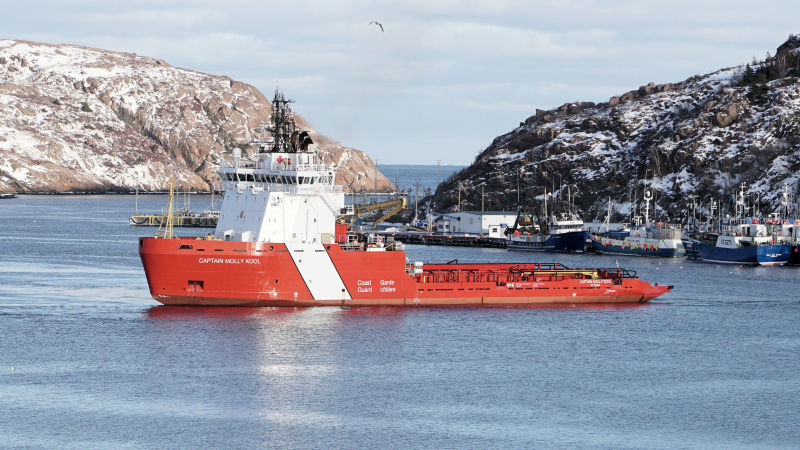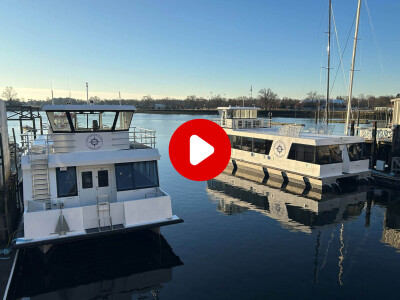The Canadian coast guard’s first new icebreaker in 25 years was welcomed to the Atlantic region headquarters at St. John’s, Newfoundland Thursday, the first of three for rebuilding the fleet.
The 307.4’x59’ Captain Molly Kool – named for the first female steamship master in North America, licensed in 1939 – is the former icebreaking anchor handling tug Vidar Viking, converted and refitted at the Chantier Davie shipyard, Lévis, Quebec. It was accepted for service in December 2018 and will be followed by two sister ships now undergoing refit at the yard to be delivered over two years, under a contract totaling $610 million.
Government officials say they are an early step toward a planned $15.7 billion fleet renewal of 18 ships to be built in Canada, including four under contract now. The government also plans to add a third Canadian shipyard as a partner in its National Shipbuilding Strategy in addition to Seaspan's Vancouver Shipyards and Irving Shipbuilding, to be selected through a competitive process.
Canada’s icebreakers operate from December to May in Atlantic Canada, the St. Lawrence River, and the Great Lakes, and from May to November in the Arctic. The Great Lakes and St. Lawrence shipping industry took the occasion of the Captain Molly Kool’s arrival to call for more new icebreaking assets for its region as well.
The three converted anchor handling tugs are replacing vessels being taken out for major repairs, and will not add real capacity to the fleet, the Chamber of Marine Commerce said in a prepared statement Thursday.
“We congratulate the Coast Guard on delivering an interim measure with the Captain Molly Kool and its two sister ships to prevent the breakdown of service. It’s important that these ships be part of the resource pool for Great Lakes-St. Lawrence shipping – which was plagued with ice problems in the Great Lakes this past spring and during the winter on the St. Lawrence River,” said chamber president Bruce Burrows. “However, we also need an urgent commitment that new ice-breaking vessels will be built within the next 5 to 10 years for our region as part of the recently announced program for Coast Guard fleet renewal.”
Canadian and U.S. Coast Guard crews are hampered by an aging fleet on the Great Lakes, according to the chamber. Two U.S. icebreakers were out of service in March and a Canadian icebreaker assigned to Lake Superior was only able to operate at 60 per cent of capability and was idled in April due to mechanical issues.
Ice build-ups in the St. Lawrence River during January kept eight container ships stuck at the Port of Montreal, and 10 others at other ports in Quebec.
“We need to preserve the international reputation of the Great Lakes-St. Lawrence navigation system as being a reliable trade gateway that’s open for business,” said Burrows. “But it’s not just about dealing with service breakdowns due to the aging fleet – we need more overall capacity. Unpredictable weather events are becoming the new normal and we urge the government to recognize that we need additional ships for contingency purposes.”




.jpg.small.400x400.jpg)
